La Fine Di Dio: Lucio Fontana
La Fine Di Dio: Lucio Fontana
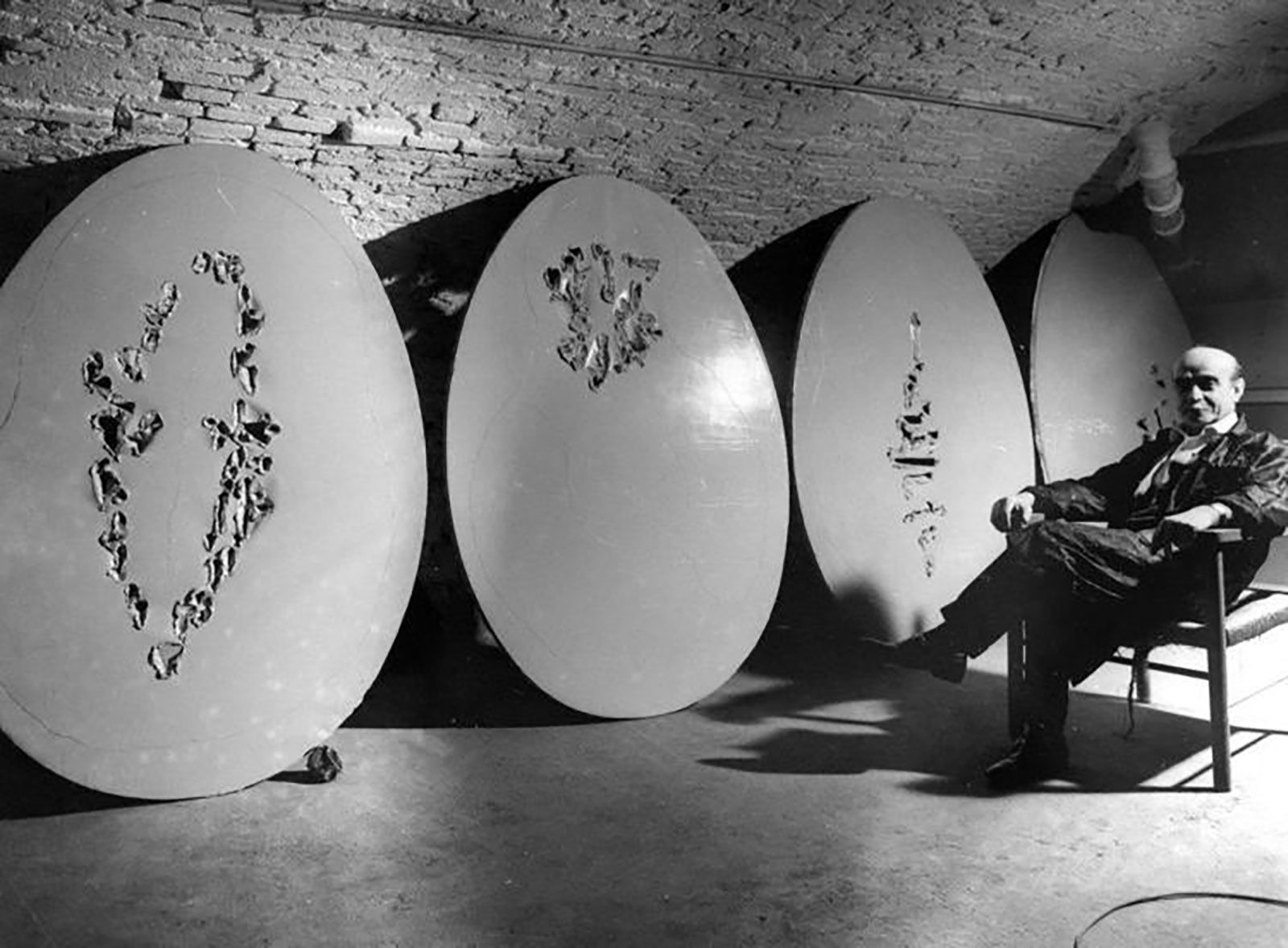
Lucio Fontana with four works of the series “La fine di Dio”, by Orazio Bacci
“I do not want to make a painting. I want to open up space… create a new dimension tie in the cosmos as it endlessly expands beyond the confining plane of the picture.”
In the early 1960s when humankind started to venture into space, embarking on an unimaginable journey based on the universal human instinct to explore the unknown, artist around the world were influenced to create work that reflected the visionary spirit of the time. Amongst them was Lucio Fontana, founder of Spatialism, who created his career-defining series of canvasses based on human exploration into space. Titled “La fine di Dio”, “The end of God” this enigmatic and profoundly philosophical body of work extensively foreshadowed man’s experience of an epoch saturated by complex and contradictory sentiments.
Now considered absolute masterpieces that break records at auctions around the world, Fontana’s oval-shaped canvasses were created at a crucial point within the artist’s career that ultimately defined his practice and tied together years of artistic investigation into matter, space and spirituality. These works were created at the apex of Spatialism, a movement which Fontana founded in the 1940s through the publication of the “Manifesto Blanco”. Spatialism’s principle thought discussed the idea of a new art form that would “involve the dynamic principle of movement through time and space“. The artist’s background as a sculptor proofed vital in exploring the spatial confines beyond the traditional canvas, as he began creating groundbreaking three-dimensional works such as the “Ambienti Spaziali”, “Spatial Environments.”. Commonly categorised by two essential interventions to the canvas, the “tagli”, “cuts” and the “bucchi”, “holes”, Fontana’s oeuvre finds its distinction in the unique treatment of the canvas. Fuelled by the explosive innovations and developments of these decades, the artist and his peers were motivated by the notion of the death of the traditional oil painting, an antiquated and outdated art form. Fontana called upon artists to understand themselves as scientists that in light of an unravelling new vision of the world had to produce what expressed an evolution into new space, matter and an ultimately frightening void.

Lucio Fontana by Ugo Mulas in 1964
“An act of rupture, beyond the limits imposed by habit, customs and tradition but- let this be clear- one that was born of an honest understanding of tradition, and the academic use of the chisel, of the pencil, of the brush and of colour.”
The artist reportedly became inspired to create this series when commissioned to illustrate a bible. Instead of visualising the antique and commonly known Roman catholic imagery, Fontana visualised for the first time what would become the oval-shaped series of canvasses. Originally shown amongst other works in an exhibition in Zurich, its first dedicated solo show titled “Lucio Fontana: Le Ova (The Eggs)” was held in Milan shortly after. Compassing thirty-eight works in total this series was completed within two consecutive years, from the beginning of 1964 through the end of 1964. Shaped in an identical ovoid form the works all present varying monochrome colour ranging from subdued tones to bold pinks and greens.
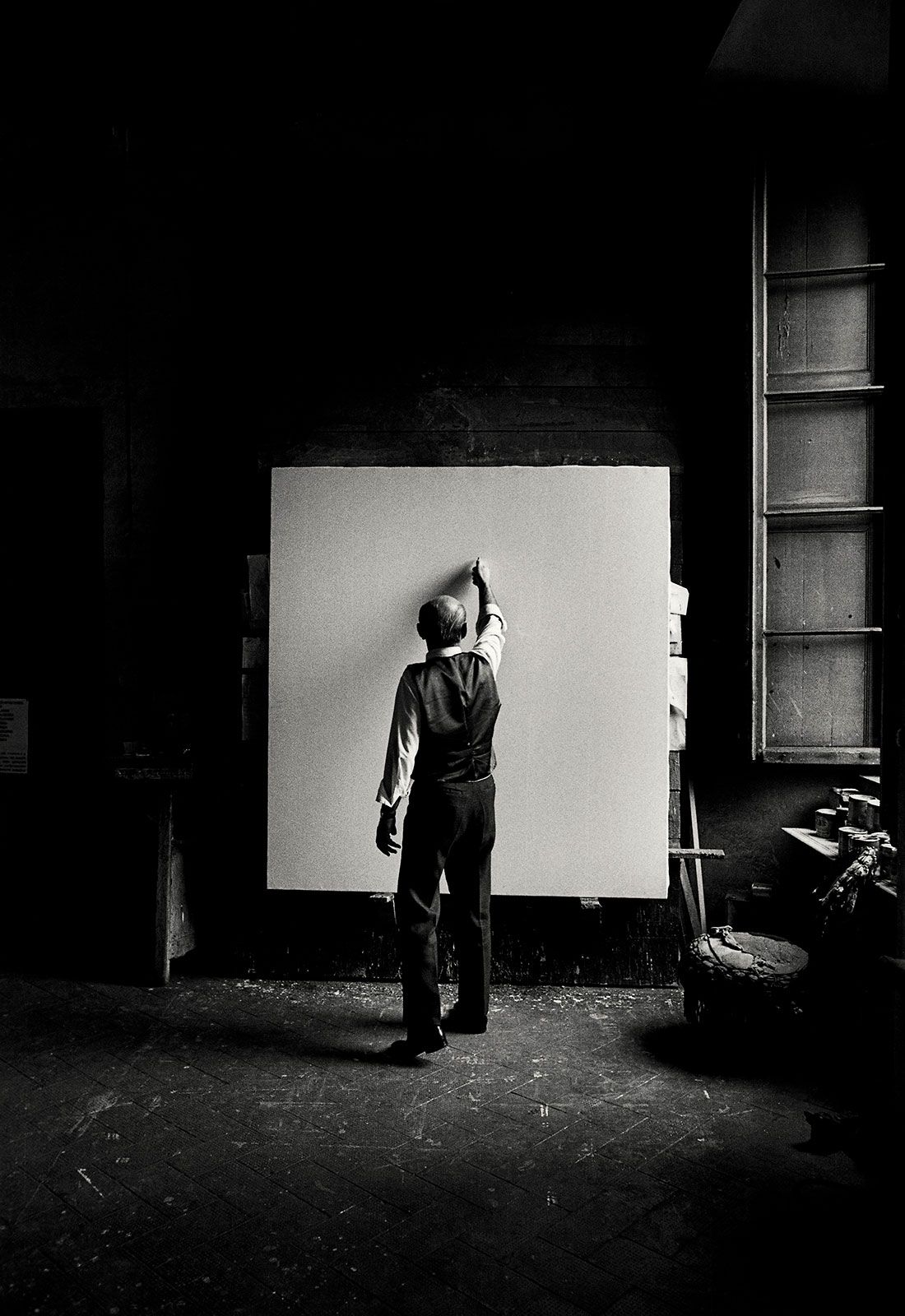
Lucio Fontana by Ugo Mulas in 1964

Lucio Fontana by Ugo Mulas in 1964
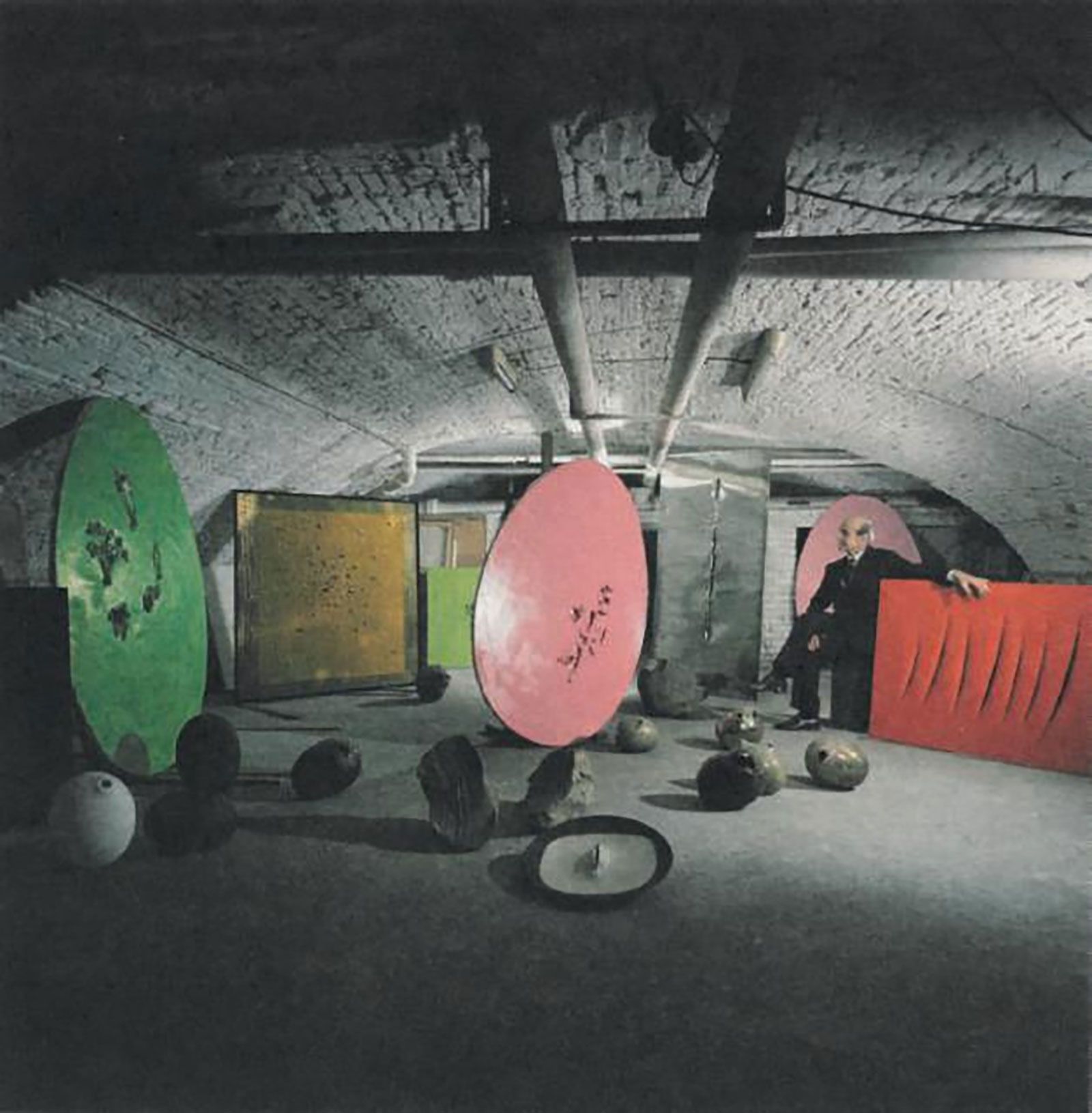
Lucio Fontana, Milan, 1963 Photo: Ugo Mulas Image: © Ugo Mulas Heirs. All rights reserved
“Art is going yo be a completely different thing. Not an object nor a form. Art is going to become infinite, immensity, immaterial, philosophy. Enough of the bourgeois function of art. Open the doors.”
Their rather shocking title, proclaiming the end of God, based itself on the artist’s belief that in the face of new technology and innovations, such as the human space exploration, art would eventually become distinct. Further, the faith in a Christian God would become redundant, as it would not be able to take space within this new conception of the universe. Fontana here echoes the famous Friedrich Nietzsche, who in 1882 famously stated “God is dead” in the face of the present era of enlightenment. In a similar thought process, the Italian artist foresaw the end of a worldview which based itself purely on earthy belief systems, practices and traditions.
“The Gods are one thing, this is ye end of Gods on earth, and by this I mean: the end of these Gods, but the continuation of one God” what does this mean? Nothing! Who knows how God appears?” And so, I made these perforations, holes.. and I said “I believe in God”. And they came and said: “What do these mean?” “(They are).. an act of faith”..(I answered)…”the only gesture that I can profess to is this: to believe in God…”

Lucio Fontana “La Fine di Dio” at Art Basel 2017
“Beyond perspective.. the discovery of the cosmos is a new dimension, it is infinity, so I make a hole in this canvas, which was at the basis of all the arts and I have created an infinite dimension… the idea is precisely that, it is a new dimension corresponding to the cosmos.. The hole is, precisely, creating this void behind there… Einstein’s discovery of the cosmos is the infinite dimension, without end. And so here we have: foreground, middleground and background.. to go farther what do I have to do?… I make holes, infinity passes through them, light passes through them, there is no need to paint.”

Detail of Lucio Fontana, “La fine di Dio”
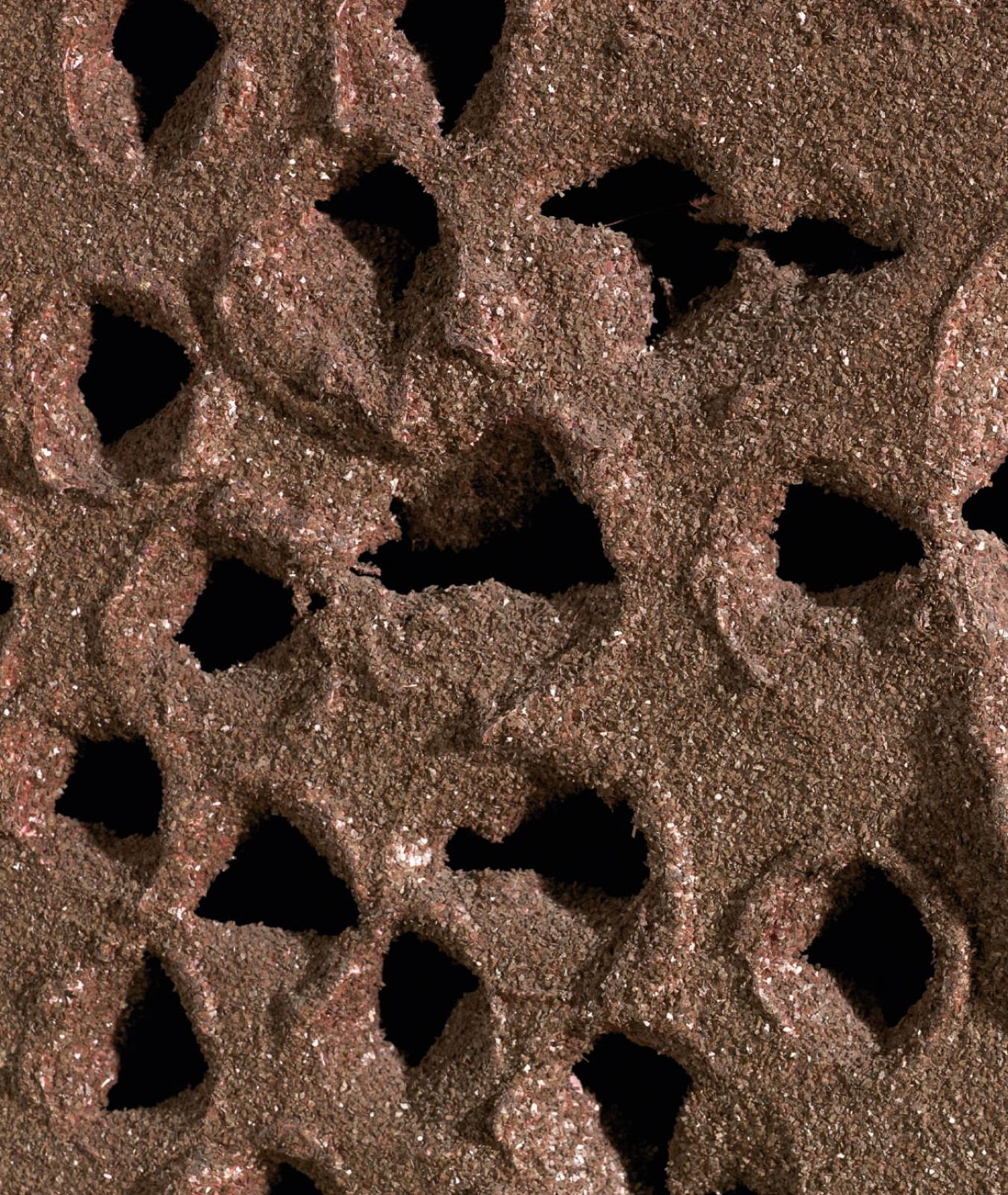
Detail of Lucio Fontana, “La fine di Dio”

Detail of Dieric Bouts, “Christ Crowned with Thorns, circa 1470
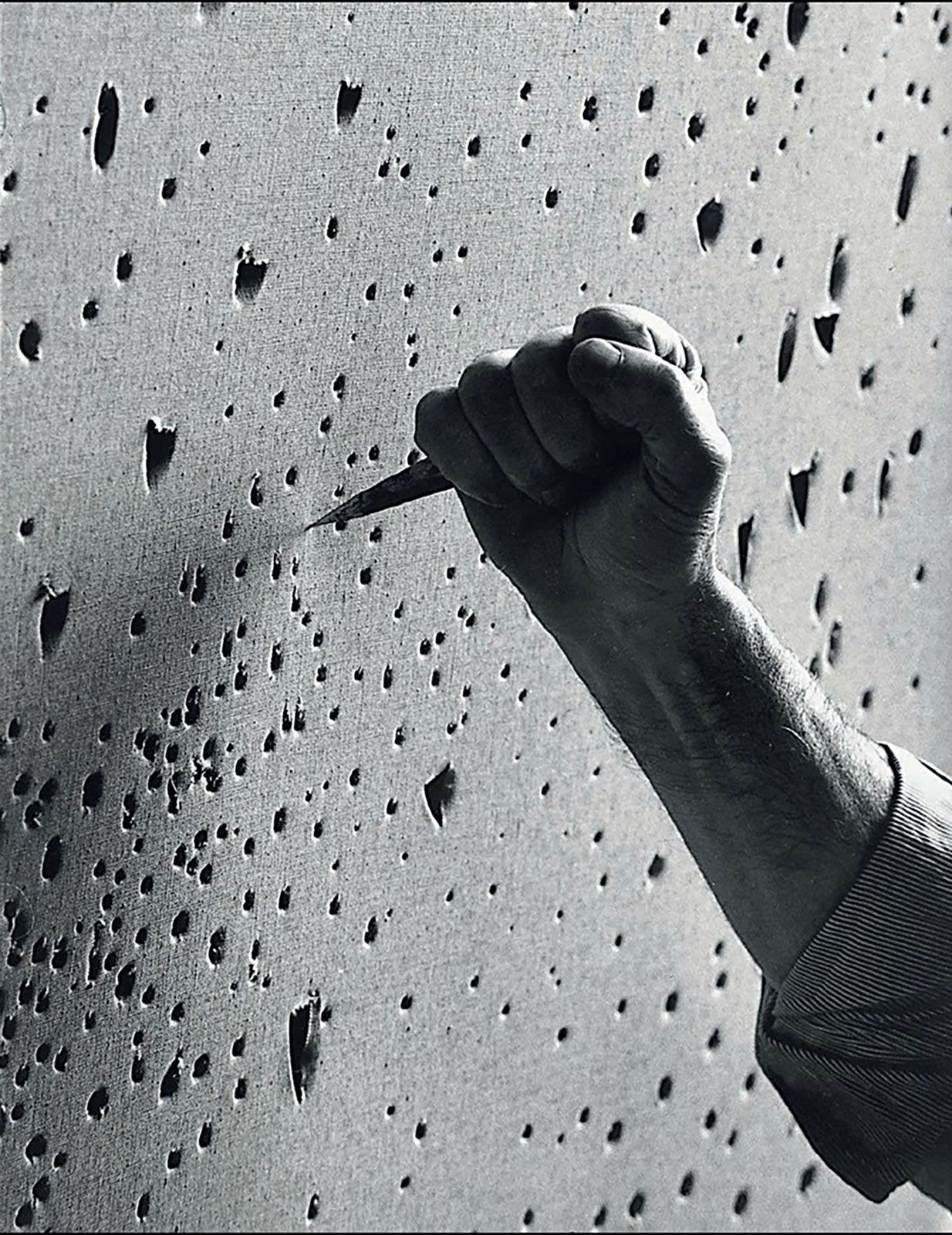
Lucio Fontana slashing the canvas
“They represent the pain of man in space. The pain of the astronaut, squashed, compressed, with instruments sticking out of his skin, is different from ourshe who flies in space is a new type of man, with new sensations, not least painful ones.”
Fontana’s “La Fine di Dio”, is a unique historical body of work rich with symbolism. Its oval shape, reminiscent of the egg carries immense religious meaning. As a universal symbol for the creation of life itself, the egg is an essential icon across a range of ancient civilisations ranging from the Greek Orphic, the ancient Egyptian, Chinese and Hinduism. Further, as a symbol os resurrection, the egg is an important emblem within Christianity and Judaism. Representing an infinite circle of life, it stands as a mystical symbol for the infinite realms of time and space. Fascinated by this symbolic power, Fontana’s appropriation of the ovoid form carried immense universal meaning mirroring the notion of wholeness and perfection. Complete in itself, it additionally represented its opposite, a non-form that in an endless loop with itself signified simultaneously everything as well as the confines of nothing.
“Let’s not be romantic … In 500 years time people will not talk of art, they will talk of their problems and art will be like going to see a curiosity – like the two rocks put together by the first caveman. What were they up to ? Why did they cover walls with pictures? Today man is on earth and these are all things that man has done while on earth, but do you think man will have time to produce art while travelling through the universe? He will travel through space and discover marvellous things.”
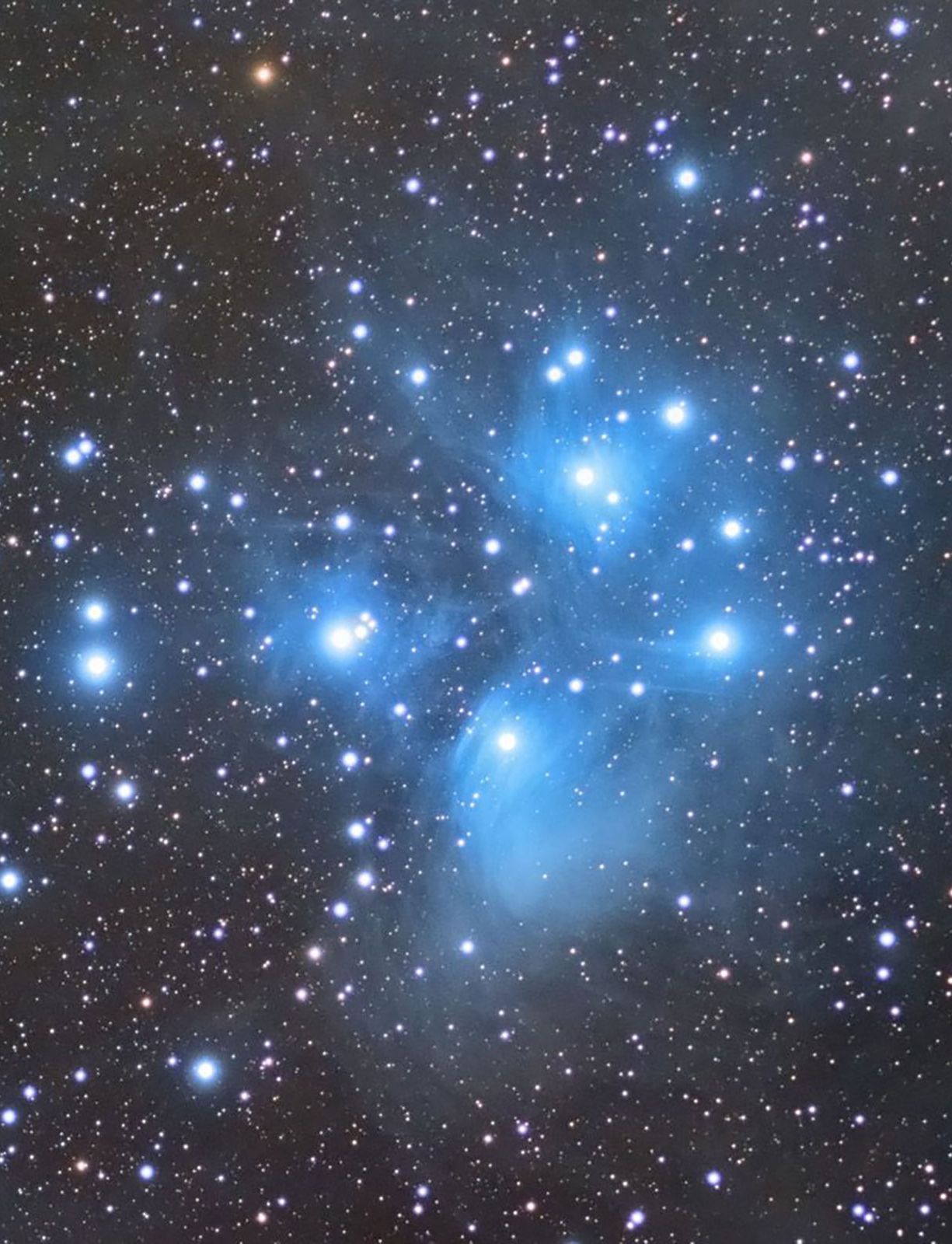
Pleiades star cluster

First man in space Yuri Gagarin, 1961